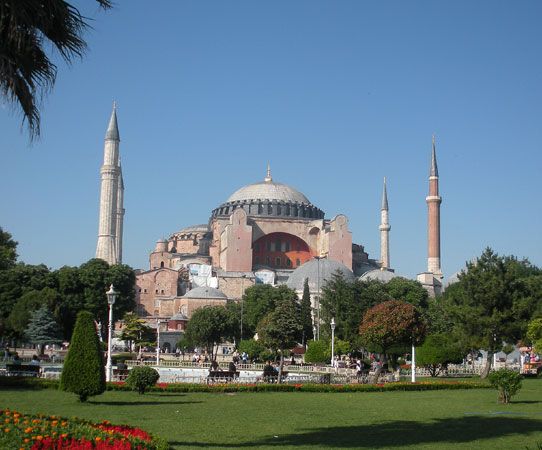Aya Sofya, Emperor Constantine's Church of Holy Wisdom
![]()
Constantinople, the New Rome was founded as a Christian city in 324AD. Emperor Constantine's plan for the city included the building of two great churches - the Aya Sofya (Holy Wisdom) and Hagia Eirene (Holy Peace).

The original Aya Sofya was destroyed in the Nika revolt of 532 AD. Later in the 6th Century, in its place, architects Anthemius of Tralles and Isidore of Miletus created a new Aya Sofya, a building in a manner and on a scale previously unknown to the Byzantine world. For nearly 1000 years it dominated the skyline of the city and was the largest enclosed space in the world. It stood as a monument to architecture, engineering and construction innovation, as well as to Christ.
After the Ottoman conquest in 1453, the church became a mosque through the addition of a mihrab, mimber and a loge for the sultan and his entourage, all designed by Italian-Swiss architects, the Fossati brothers. The interior decor was changed as well with inscriptions from the Qur'an in the dome and large discs inscribed with the names of Allah, Prophet Muhammed, Hasan, Hussein, and the four caliphs above the nave, a great contrast with the four Seraphim, their wings modestly covering their bodies, still hovering above. Fortunately, the mosaics and other wonderful Christian era decorations were preserved.
Today, the building, with its vast interior spaces and spiritual artistic expressions offered visitors an otherworldly trip back in time. Click here to join us on our tour. (Opens in a new window)
Click here to return to our 'Summer 2010 - Turkey and More Time in Europe' page
![]()